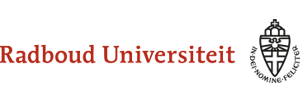American English Phonetics
Another American English Faculty Project
2.1 The plural, third person singular, and genitive endings
The English plural morpheme has three shapes (or ‘allomorphs’): /ɪz/, /s/ and /z/. They are used as follows:
- /ɪz/ after /s, z, ʃ, ʒ/, as in kisses, roses, bushes, batches, bridges;
- /s/ after the fortis obstruents /p, t, k; f, θ/, as in lips, lights, books, coughs, moths;
- /z/ in other situations, i.e. after /b, d, g; v, ð; m, n, ŋ, l, r/ and all vowels. Examples are tabs, loads, bags, loves, scythes, storms, pens, kings, balls, bars, as well as trays, hoes, villas, etc.
These rules also apply to the morphemes for the third person singular present tense and the genitive.
Third person singular present tense
/ɪz/ – kisses – /ˈkɪsɪz/
/s/ – hits – /hɪts/
/z/ – goes – /goʊz/
Genitive
/ɪz/ – Joyce’s – /ˈd͡ʒɔɪsɪz/
/s/ – Jeff’s – /d͡ʒɛfs/
/z/ – Joe’s – /d͡ʒoʊz/
Note 1: The /f, θ, s/ at the end of the following nouns change into /v, ð, z/ in the plural.
- singular /-f/ becomes plural /-vz/ in: calf, elf, half, knife, leaf, life, loaf, -self, sheaf, shelf, thief, wife, wolf. Note that the spelling also changes: calf – calves, etc. The plurals of dwarf, hoof (/huːf/ or / hʊf/), scarf, wharf, have either /-fs/ or /-vz/.
- singular /-θ/ becomes plural /-ðz/ in: path and mouths. The plurals of bath, lath /læθ/ (‘lat’), oath, sheath, truth, wreath, youth have either /-θs/ or /-ðz/. The spelling remains unchanged.
- singular /-s/ becomes plural /-zɪz/ only in house. So: /ˈwʌn ˈhaʊs/ but /ˈtuː ˈhaʊzɪz/.
Note 2: Instead of /ɪz/, some speakers have / əz/.
